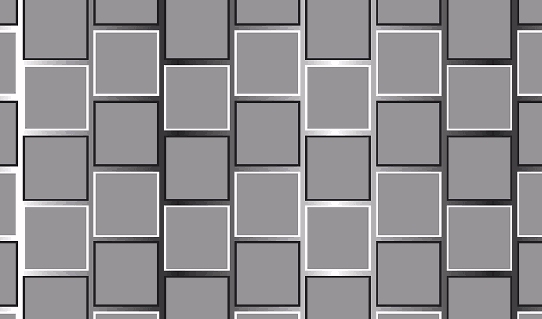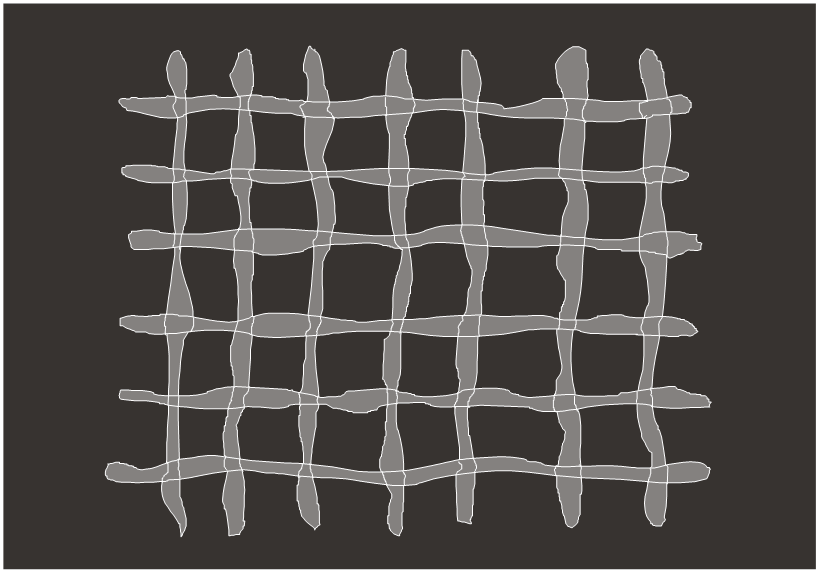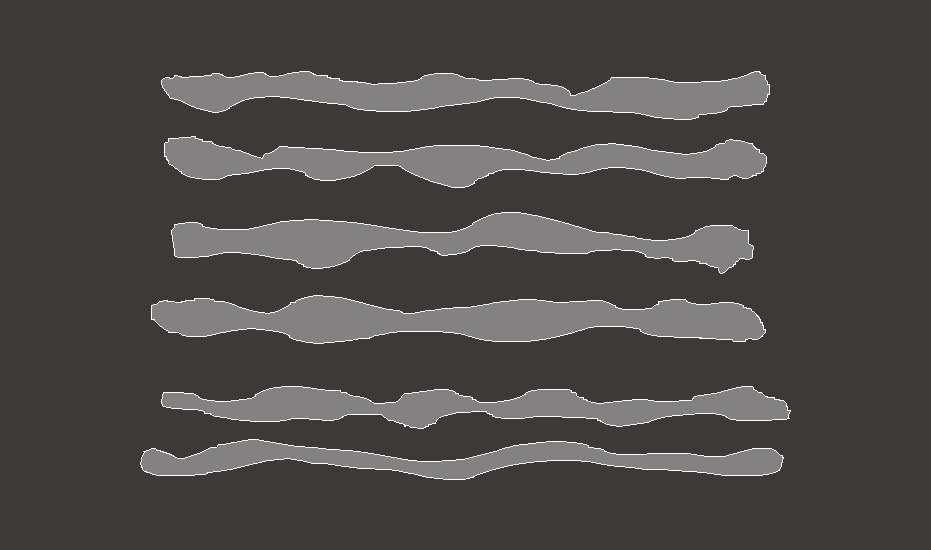|
|
Publications etc. <<A few illusions>> PhD projects Teaching Public activities C.V. Contact |
Catching patches This visual illusion was selected
as one of
the Top 10 illusions in the 'Best illusion of the year' competition
(Sarasota, 2006). Below is a dynamic version of
the illusion. Note that grey patches arise at the crossings of two homogeneously colored outlined bars.
Here is another dynamic version....
The patches that appear at the crossings in the Hermann
grid
are known to disappear when the straight contours in the grid are
distorted, e.g. by curvature (Geier, 2004). Here, we present an
illusion based on Hermann-grid like gratings in which the contours are
quite randomly distorted. These distortions guarantee a severe
reduction or complete disappearance of the visibility of the patches.
Starting with these gratings we show that the patches at the crossings
return when luminance edges are introduced and extended at the
intersections. The ‘returned’ patches have the same
relative lightness properties as they would have in a regular Herman
grid (dark patches when the crossing bands are relatively light, and
light patches when the crossing bands are relatively dark). In
addition, the polarity of the perceived lightness difference does not
depend on the lightness of the edges (i.e., whether they are dark or
light). A remarkable effect here is that at the crossings the whole
area between the edges is perceived to have a different lightness,
irrespective of the shape of that area (i.e., whether the edges bend
inward or outward etc.). Measurements on perceived lightness
differences confirmed the above observations (and also for observations
on various other edge manipulations). A manuscript is currently in
preparation (Van Lier & Vergeer). To illustrate this illusion,
we
have included various examples (also an example based on one of the
Hermann grid manipulations of J. Geier). Here is a Powerpoint
file with
various examples of the illusion. |
||||||||
| Top |







